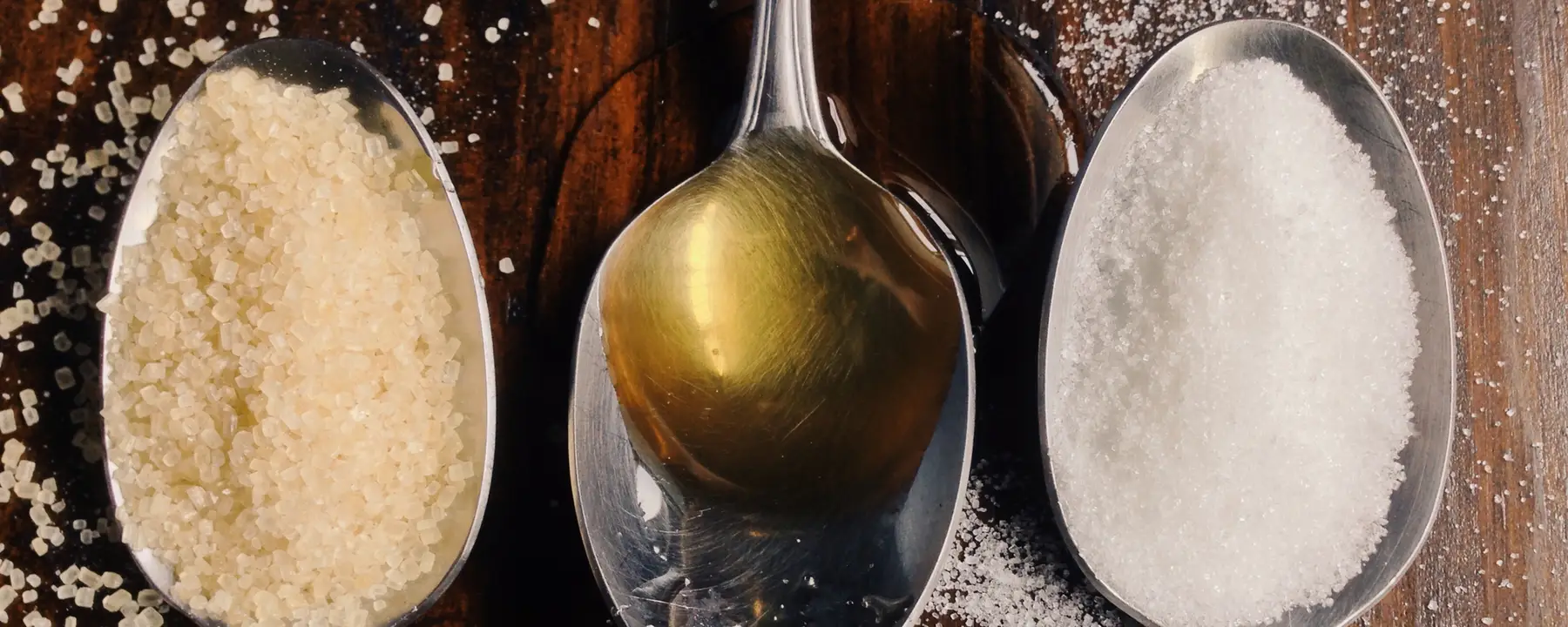Studying the use of high-intensity sweeteners in the food industry
Objective
To study the landscape of high-intensity sweeteners and the global forces shaping their future.
Approach
RTI Innovation Advisors answered key questions for our client around high-intensity sweeteners. We identified trends, explored the landscape of emerging high-intensity sweeteners, and researched the impacts of high-intensity sweeteners on gut health.
Impact
Our work helped our client effectively shape their product line to meet increasing sustainability goals and health needs of consumers now and in the future.
Sugar has been under scrutiny for decades because of its contributing factor to the obesity epidemic and diabetes. The discovery of artificial, high intensity sweeteners provided a win-win for those seeking to avoid sugar while maintaining the desired sweetness intensity in their foods. Yet, research has brought several of these artificial sweeteners under question for their potential to cause cancer. This research coupled with consumers growing interest in health has led to the exploration of natural, high intensity sweeteners.
In the last decade, natural sweeteners have solidified their position as a predominant ingredient in the food industry. However, consumers’ demand for natural alternatives is outpacing the market supply, and researchers are asking questions about the environmental and physical health impacts of these natural, high intensity sweeteners. At the same time, companies are racing to create and adopt the sweetest and safest high-intensity sweeteners of the future.
What are high-intensity sweeteners?
High-intensity sweeteners are sugar substitutes for table sugar (sucrose) that provide sweetness to food and beverages without contributing a significant number of calories. High-intensity sweeteners are significantly sweeter than sugar. This enables small amounts of these sweetener alternatives to be added to products while achieving the desired level of sweetness.
Common high-intensity sweeteners include:
Acesulfame potassium (Ace-K): An artificial sweetener that is about 200 times sweeter than sucrose, often used in combination with other sweeteners.
Sucralose: An artificial sweetener derived from sucrose that is approximately 600 times sweeter than table sugar. It is heat-stable, making it suitable for use in cooking and baking. Sucralose is commonly used in baked goods, beverages, chewing gum, gelatins, and frozen dairy desserts.
Stevia: A natural, plant-derived sweetener that comes from the leaves of the Stevia rebaudiana plant. Stevia is several hundred times sweeter than sucrose.
High-intensity sweeteners and the gut microbiome
Many high-intensity sweeteners have been historically assumed to pass through the body unabsorbed and unmetabolized. However, the explosion of research on the gut microbiome has called into question whether high-intensity sweeteners impact the gut microbiota composition and/or are metabolized by the gut microbiota themselves, ultimately having health implications that have previously been unaccounted for.
Mounting evidence reveals that our diets are intricately tied to the composition of our gut microbiome. The gut microbiome composition is now known as an indicator of one’s health, which regulates the metabolic and inflammatory pathways that underpin disease.
Until recently, the relationship between high intensity sweeteners and the gut microbiome has not been explored. Several in vivo and in vitro studies, however, have found changes in the gut microbial composition in response to high-intensity sweetener consumption. Some have been deemed negative and others positive. Prominent sweetener organizations view the scientific evidence as inconclusive to date. Because of this, there is a need for more research on the effects of high-intensity sweeteners and their impact to the gut microbiome to determine whether they are truly a safe, healthy alternative to table sugar.
RTI Innovation Advisors provides solutions to finding healthier high-intensity sweetener alternatives
The RTI Innovation Advisors have been solving complex innovation challenges for over 50 years. Our experts understand the unique relationship between a client’s needs, customer response, health, and food science.
In this engagement, a confidential commercial client sought the expertise of the RTI Innovation Advisors to landscape current and emerging high-intensity sweeteners and provide a comprehensive view of trends with the potential to impact the client’s sugar reduction strategy across product lines.
To do this work, the Innovation Advisors team drew from a wide range of primary and secondary research. Sweetener information was sourced from a variety of scientific journals and books to identify and characterize high-intensity sweetener opportunities and macrotrends. We supplemented our work by conducting interviews with select experts and key opinion leaders in the sweeteners space.
What does the future of sugar reduction look like?
Our global trends research validated that consumers continued interest in the health implications of their foods will steer the high intensity sweetener market of the future. In addition to looking for “no added sugar” labels, consumers will continue to seek natural and clean label ingredients. While stevia was the first natural, high intensity sweetener to market, our research uncovered many additional natural, high intensity sweeteners under research and pilot scale production, including brazzein, which recently received FEMA GRAS status.
We also identified sustainability as a key driver that will shape the future of the high intensity landscape. Many of the emerging sweeteners are naturally found in exotic plants only grown in specific regions of the world and thus their production is not sustainable if they are grown, harvested, transported in the traditional manner.
Our research identified startups that are exploring innovative production pathways, including enzymatic and fermentation platforms, which bypass the need for extensive land while also improving yield and production efficiency to minimize the environmental footprint of the sweetener’s production. These innovative production methods have forced tighter collaborations within the sweetener market. Today, both food manufactures and ingredients suppliers are partnering directly with platform providers, including biotechnology companies and startups to expand their research and production capabilities.
Global trends, coupled with a list of new, natural high intensity sweeteners, allowed us to easily discern which natural, high intensity sweeteners may make it to the market next. Each of the sweetener’s physicochemical properties and composition shed light on its potential health implications, including interaction with the gut microbiome, potential for sustainable production, and advantages or disadvantages regarding use in various food matrices. As such, we were able to direct our client to the most promising natural high intensity sweeteners and respective companies.
Our landscape and final deliverables enabled our client to understand the breadth of high-intensity sweetener innovation and guided their understanding of which sweeteners may be most suited to meet their portfolio’s needs and be considered for their sugar reduction strategy.
Learn more about RTI Innovation Advisors.




